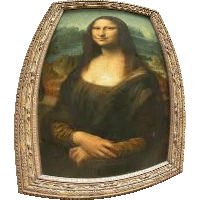Java Application for the Easy Creation of an Art Catalogue
Spring 2013
Master Semester Project
Project: 00257

Shooting pictures of paintings with consumer cameras produces disappointing results. Geometric distortions are all-too-often observed and are particularly irritating. A first type of distortion is characterized by the fact that lines that are straight in the real world become bent once their are captured by the camera. A second type of distortion is characterized by perspective foreshortening. In this project, we propose to make the compensation process automatic. Since solving the general problem is too ill-defined, we simplify it by focusing on the post-processing of photographs of paintings in a rectangular frame, which can find applications in the creation of an art catalogue.
The project will consist of several steps. First, the student will need to understand how to use interpolation to apply a geometric transformation to an image. Second, a lens-and-barrel distortion model will need to be established, along with its inverse. The third step is theoretical too, where the student will have to deal with geometrical considerations to recover the lens-and-barrel parameters from the distorted version of an ideal rectangle; possibly at that step, the geometry will be insufficiently constrained and strategies or additional simplifications will need to be devised to circumvent the issue. Fourth, the distorted picture of the frame of the painting will need to be extracted from the image and described in terms propitious to the theoretical analysis made at Step three. Finally, the four steps will be combined to automatically undo lens-and-barrel distortions. The whole procedure will be coded in Java on ImageJ.
Requirements: to be following or to have followed the course on image processing taught by Michael Unser.
The project will consist of several steps. First, the student will need to understand how to use interpolation to apply a geometric transformation to an image. Second, a lens-and-barrel distortion model will need to be established, along with its inverse. The third step is theoretical too, where the student will have to deal with geometrical considerations to recover the lens-and-barrel parameters from the distorted version of an ideal rectangle; possibly at that step, the geometry will be insufficiently constrained and strategies or additional simplifications will need to be devised to circumvent the issue. Fourth, the distorted picture of the frame of the painting will need to be extracted from the image and described in terms propitious to the theoretical analysis made at Step three. Finally, the four steps will be combined to automatically undo lens-and-barrel distortions. The whole procedure will be coded in Java on ImageJ.
Requirements: to be following or to have followed the course on image processing taught by Michael Unser.
- Supervisors
- Philippe Thévenaz, philippe.thevenaz@epfl.ch, 021 693 51 61, BM 4.137
- Michael Unser, michael.unser@epfl.ch, 021 693 51 75, BM 4.136